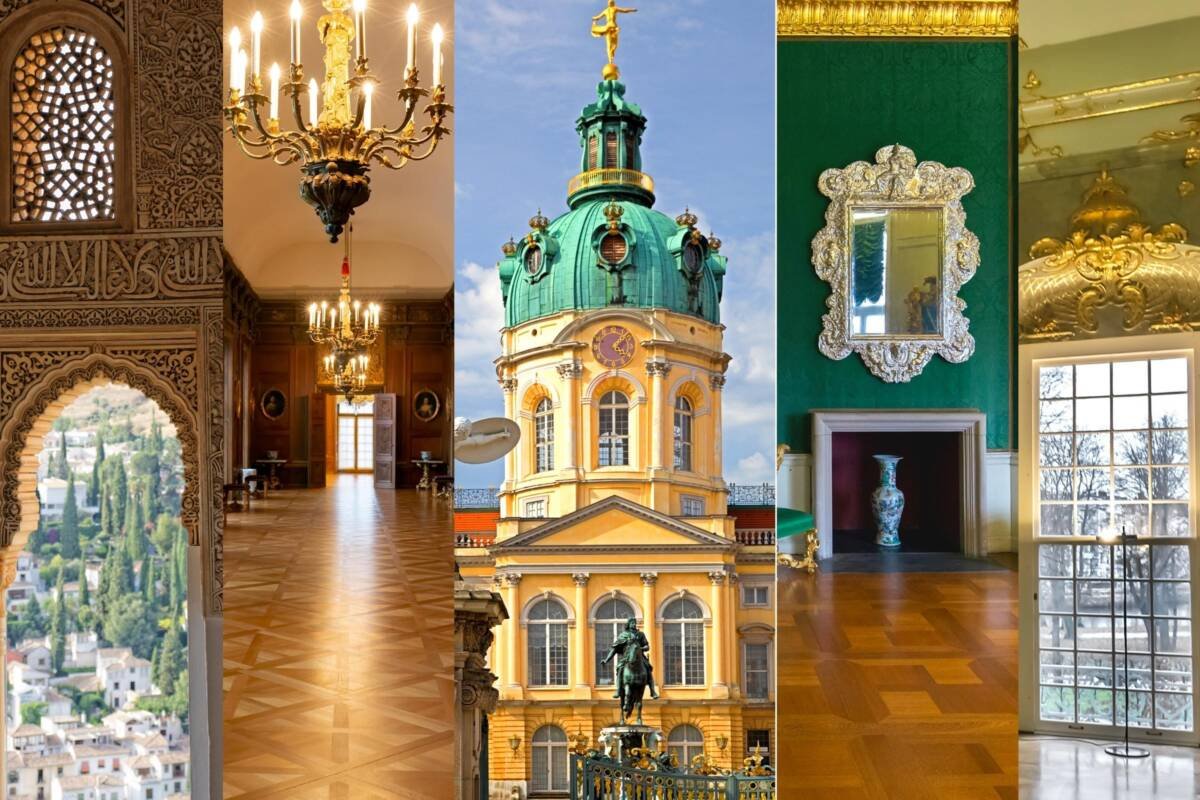Located in the district of Charlottenburg, close to the river Spree, you’ll find one of the most beautiful palaces in Berlin – the Charlottenburg Palace. This baroque and rococo style palace is an architectural masterpiece that was built at the end of the 17th century.
Inside the palace you’ll see elegantly restored staterooms that are filled with priceless antique porcelain and tableware. Also on display are the Prussian crown jewels and the palace is home to an archaeology museum. On the outside visitors are free to walk through the formal and informal gardens surrounding the palace which provide a haven of peace and tranquillity.
The Charlottenburg Palace Berlin is one of the largest palaces in Germany and a visit should surely be on your bucket list. Here’s everything you should know about the palace, its history, the top attractions of the palace and grounds, opening hours, and much more.
Join our Berlin guided tours and see for yourself why this palace is one of our top Berlin attractions.
Brief History of Charlottenburg Palace

It all started in the year 1695 when Johann Arnold Nering was commissioned to build a small country house for Sophie Charlotte, wife of Elector Frederick III (who later went on to become King Friedrich I). The couple married in 1684 and Friedrich III gifted Sophie Charlotte a piece of land and an estate just outside of Berlin. This is where the amazing Charlottenburg Palace was finally built, although the building was originally called Lietzenburg Palace.
The palace served as Sophie Charlotte’s summer residence and she often referred to it as her “court of the muses.” She was a fan of music and arts and often invited poets and other famous artists to stay at her summer residence. After her untimely death at age 36, her husband renamed the palace and surrounding area Charlottenburg.
After the death of Sophie Charlotte, the palace underwent several renovations and eventually became an official state building of the royal family. And a 100 years later, another woman – Queen Louise of Prussia – left her mark on the palace and its gardens. She made several changes to the palace’s structure and décor. Although her contributions to the palace were never publicized nor discussed as much as Sophie Charlotte.
However, Queen Louise was very popular during her time. She lived in the East Wing with her husband, King Friedrich Wilhelm III, and their social life centered around the palace.
Towards the end of the 19th century, the Charlottenburg Palace was no longer used as a royal residence and its grounds were opened to the public. During the Second World War, the palace suffered heavy damages and after a series of renovations in recent years, the palace and its grounds were restored to its former glory.
Today, Charlottenburg Palace Berlin is a sight to behold. It is home to one of the largest and most impressive collections of 18th century French paintings outside of France. It’s one of the top Berlin attractions and is well worth visiting while you’re in the city.
Attractions of Charlottenburg Palace
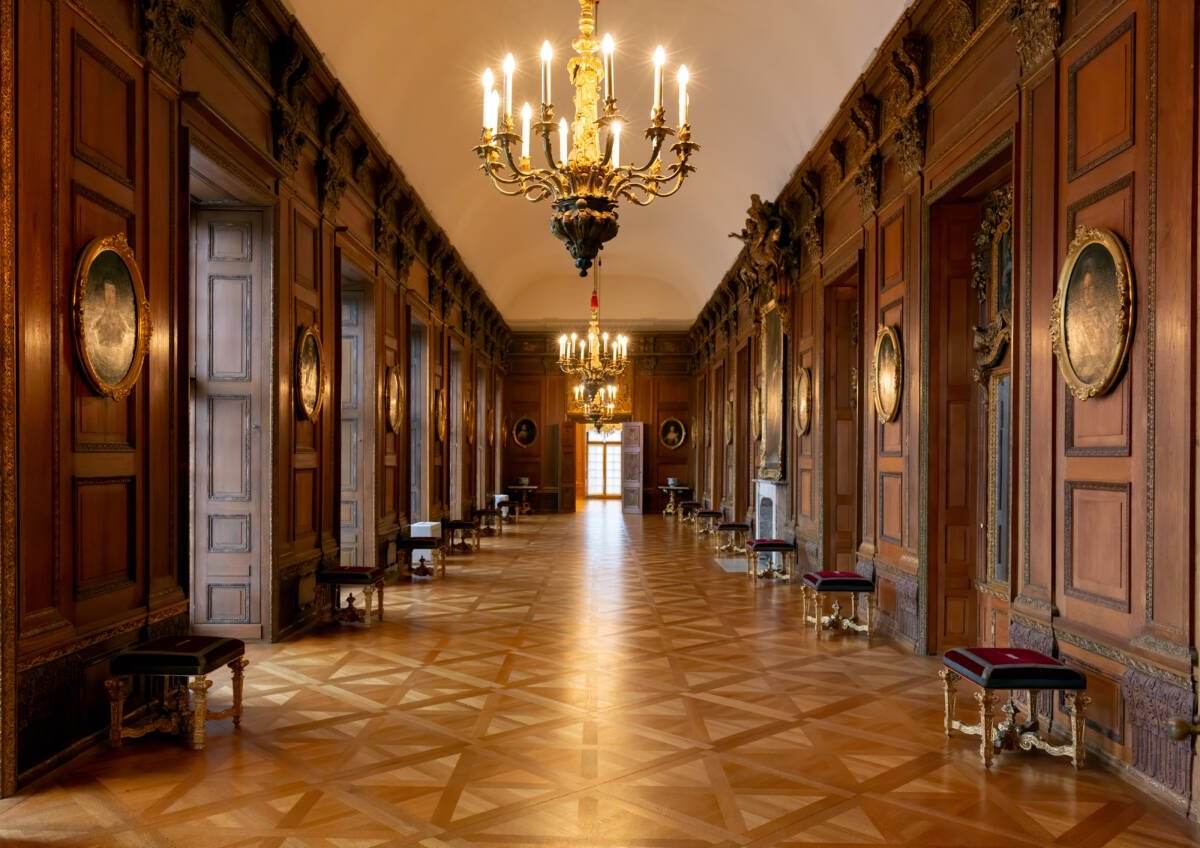
There are wonderful things to see and do at Charlottenburg Palace. Along with the palace itself, there are numerous buildings on the grounds, as well as the palace garden and park.
The New Wing (Neuer Flügel)
This historic wing is home to some of the finest rooms at Charlottenburg Palace. After the Second World War each of these exquisite royal rooms have been carefully restored to their original form and decoration. At the west end of the wing are the apartments that were once occupied by Frederick I, including his bedroom, study, the exquisite Red Braid Room, and an audience chamber.
The apartments that belonged to his second wife Sophie Charlotte are also located here. The most impressive of these rooms include an audience chamber, antechamber, and living rooms. The wonders of these rooms include – the many pieces of Chinese lacquer furniture and European imitations, together with inlaid and carved furniture from around 1700.
The most engaging are the paintings by Wiedemann, Pesne, and other artists, as well as rich tapestries from the Berlin manufacturer Charles Vigne. The Palace Chapel and the scene of King Frederick William II’s marriage to Countess Julie von Ingelheim in 1787, has also been completely recreated.
At the eastern side, on the ground floor, is the Oak Gallery that is still used for chamber music concerts. Along with the apartments once occupied by Frederick William and Frederick William III. All these rooms are richly furnished with chinoiserie and furniture, along with many paintings of the Biedermeier period.
While on the upper floors of this wing are the apartments that once belonged to Frederick the Great, this includes his richly decorated Rococo State Rooms. The State Dining Room is also a must-see and is also known as the White Room. It has walls faced with stucco that resembles pink marble. Finally, the Golden Gallery is a stunning rococo ballroom that has been remarkably restored, and there are glass cases scattered throughout the space with priceless pieces of porcelain and other treasures.
The Old Palace (Altes Schloss)
The Old Palace is an equally interesting place to explore, it’s a Baroque haven overflowing with priceless Chinese and Japanese porcelain collections.
On display are a number of valuable works made of gold and silver, this includes the crown jewels, the royal silver, a superb display of porcelain tableware and family portraits.
It’s luxurious extravagance at its very best, and a space where you will be completely baffled at the pure opulence of life in those days.
Charlottenburg Palace Park
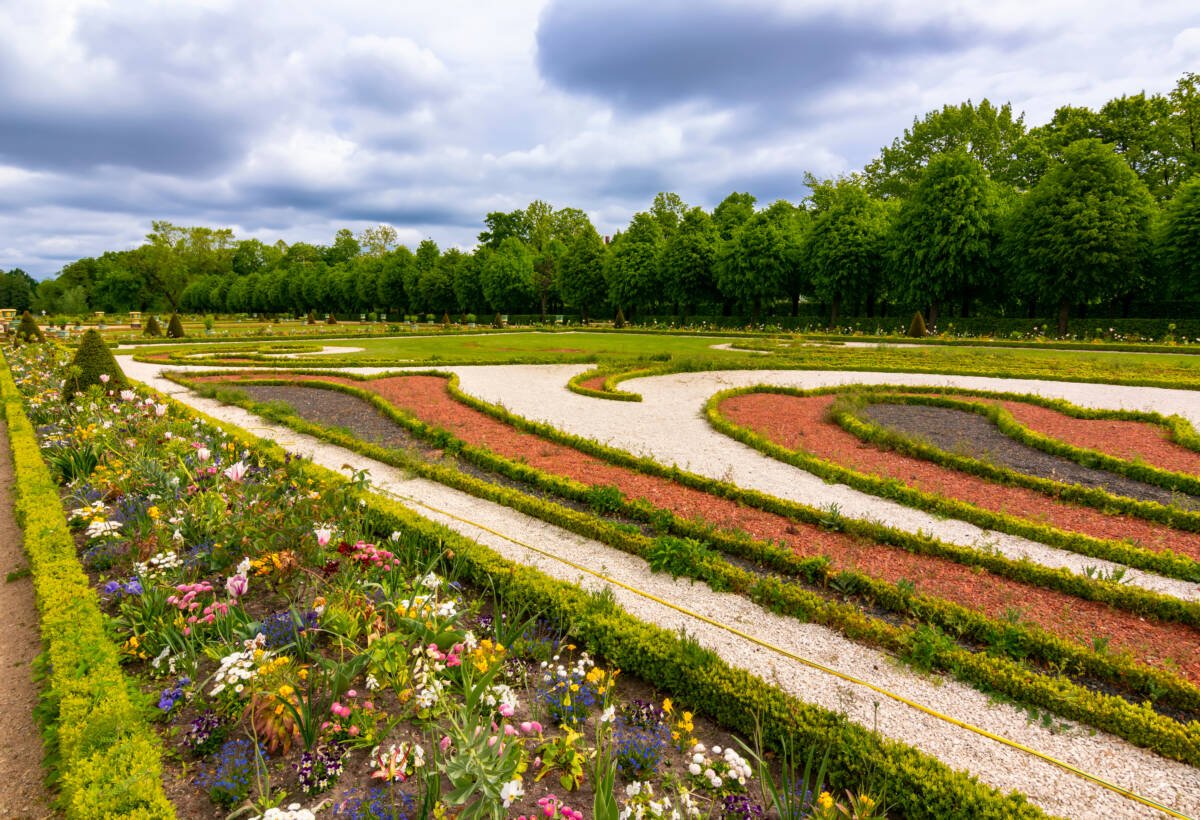
The palace park is one of the most popular green spaces in Berlin. It was laid out by Siméon Godeau in French style in 1697. Later in the 19th century it was remodelled as an English-style park, and finally restored to its original Baroque style after the Second World War. The park and its gardens are a delight to explore and can be visited for free. It opens early at 6 am and closes at sunset.
The highlights include the little iron bridge near the carp pond that dates back to the 1800s, as well as a marble pillar Braco Dimitrijevic added in 1979. Also noteworthy is the exquisite New Pavilion (Neue Pavilion) built by Karl Friedrich Schinkel in 1788 in the style of a Neapolitan villa for Frederick William III and his second wife, Princess Liegnitz. The building is home to a fine collection of arts and crafts made by Schinkel.
Towards the northern side of the park is Belvedere Teahouse (Belvedere Teehaus). It was built by royal architect Carl Gotthard Langhans and now contains a fine collection of Berlin porcelain from the 18th and early 19th centuries. On the western side of the park, stands a small Doric temple – the Mausoleum. It was built by Heinrich Gentz as the final resting place of Queen Louise. It was completed in 1812 and later extended in 1841 and 1889.
You can enter the Mausoleum after climbing a few steps that lead to the chamber containing the sarcophagus and a statue of Queen Louise. The Queen is represented sleeping with folded hands and is draped in a loose garment. It was joined 30 years later by her husband, who was also buried here in a sarcophagus and added a statue depicting him in a plain military cloak.
The later burials include: Emperor William I (1797-1888) and his wife Empress Augusta (1811-90), Princess Liegnitz, second wife of Frederick William III (1800-73) and Prince Albert (1837-1906). The heart of Frederick William IV (1795-1861) is contained in a stone casket.
The Grand Courtyard
In the grand courtyard of Charlottenburg Palace stands the statue of the Great Elector, Frederick William of Brandenburg. It’s one of the finest statues of the Baroque period and was commissioned by Frederick William’s son, Elector Frederick III to honour his father as founder of the State of Brandenburg and Prussia.
The statue was built by Andreas Schlüter and its casting began in 1700, and was ceremonially unveiled in 1703 on the Elector’s birthday. The statue is represented partly in Roman and partly in contemporary attire. The Great elector adorns a bronze breastplate and a flowing full-bottomed wig, holding out his baton in a commanding gesture.
The statue originally stood on the Town Hall Bridge, but while transporting it to safety in 1943 during the Second World War, the boat carrying it sank in Tegel Harbor. It was recovered in 1949 and was finally set up in the Courtyard of Charlottenburg in 1952.
Orangery of Charlottenburg Palace
Situated on the western side of the historical palace stands the long, single storey baroque Orangery. It was built between 1709 and 1712 for King Friedrich II of Prussia by Johan Friedrich Eosanders.
Originally it was used for the preservation of the royal citrus fruit collection for the winter months. During the second world war, the Orangery was completely destroyed and was reconstructed baroque style.
Today, once again the Orangery shines in its old brilliance. The light-flooded festival room provides a pleasant space for concerts, cultural events, and banquets. It also houses a restaurant and café.
Concerts and Events
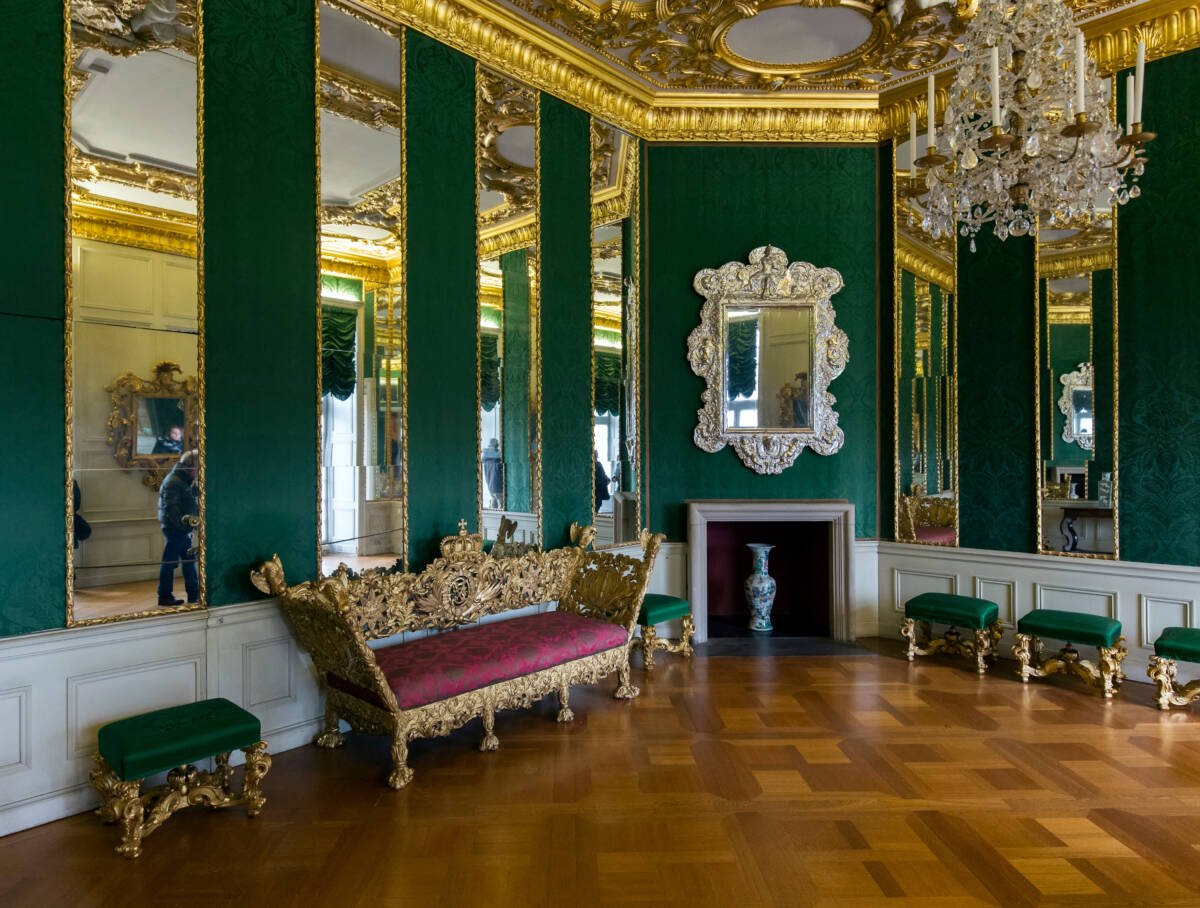
The Charlottenburg Palace is not only a beautiful sight to behold, it also hosts a series of events throughout the year such as concerts in the Orangery. It is a grand evening that includes a gala dinner and superb live concert from the Berliner Residenz Orchester.
Dressed in elaborate baroque costumes and wigs, the orchestra and singers perform much-loved pieces of classical music by famous composers such as Vivaldi, Bach and Mozart, just like the kings and queens did in the past, taking you away into the mystical royal times.
In addition to this, there is the annual Christmas Market. During the festive season, the palace provides a royal setting for a relaxed Christmas market with stalls selling arts and crafts and traditional festive treats, which is a wonderful day out for all the family.
Visitor’s Information
Of all Berlin attractions, the Charlottenburg Palace has several buildings and each has different opening and closing times, its own entrance fees and its own inclusions.
So, we have simplified this information to make your visit a hassle-free experience.
- Monday: Closed
- Gardens: Entry is free of charge and open from dawn till dusk every day of the week.
- Old Palace: Tuesday – Sunday. 10 am to 6 pm (April to October) and 10 am to 5 pm (November to March).
- New Wing: Tuesday – Sunday. 10 am to 6 pm (April to October) and 10 am to 5 pm (November to March).
- New Pavilion, Orangery, and Belvedere: Opening and Closing time similar to Old Palace. But certain sections within these buildings are randomly closed a few times in a month.
- The timings for the concerts, shows and exhibitions differ, so be sure about the timings before you take an entry into the palace.
- Entry to the palace is free for kids aged 6 and younger.
Best Time to Visit
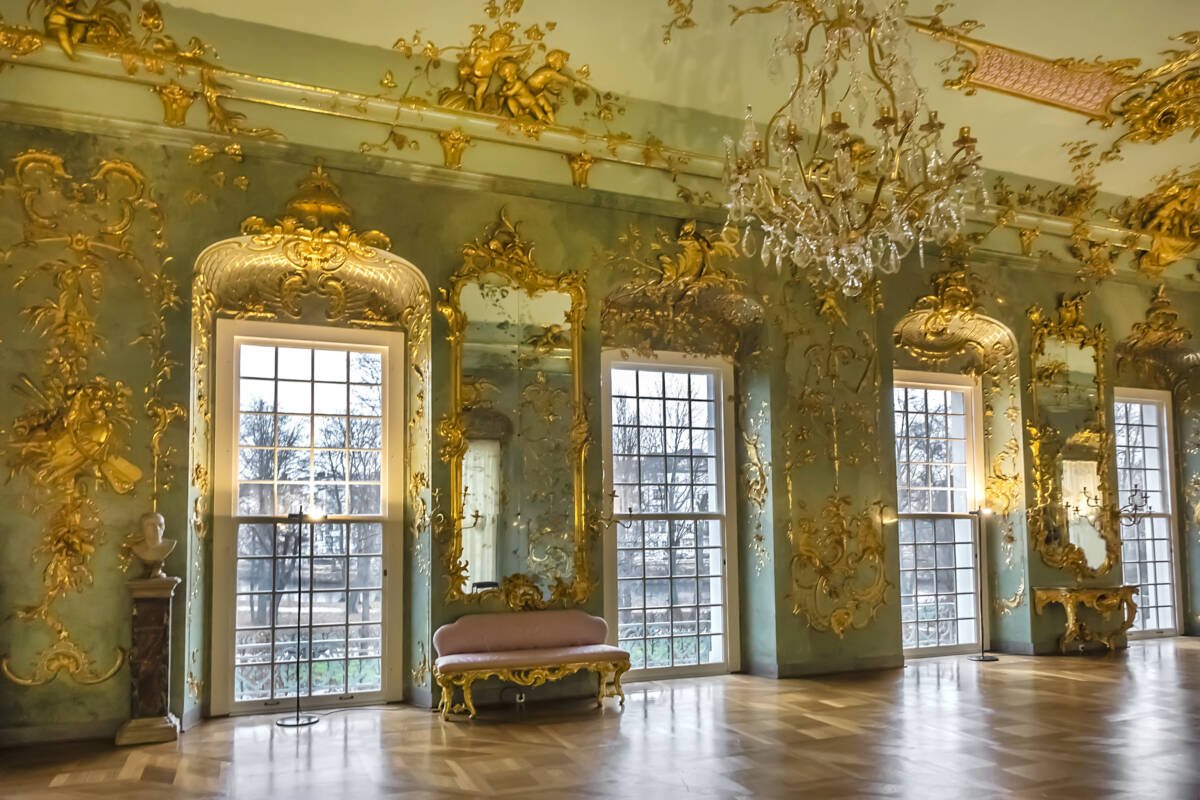
If you’re planning to visit Berlin the best time is in the months between May and October when the weather is at its best. We recommend visiting the palace in the warmer months, preferably during summer or fall when it’s dry.
While the palace is open all round the year, the buildings on the grounds are closed from October through April – this is due to lack of visitors or for restoration work. However, the Charlottenburg Palace is still worth visiting in the winter. In December, there’s a Christmas market in front of the palace and it’s rated as one of the best in Berlin.
In high season, it’s best to go early and explore the Charlottenburg Palace to avoid waiting and crowds. And if you are booking the experience with dinner and concert, the best time to visit is at sunset.
Tips For Your Visit
- Allot two to three hours to explore the palace’s main attractions. Explore the rooms at your own pace and take as many photos as you want. Don’t rush as there’s so much to see.
- Wear comfortable shoes as the palace is huge, you’ll be doing a lot of walking around the grounds. The paths are not paved, just gravel and dirt, so dress accordingly.
- You may take photos inside but you cannot use flash.
- They do not have any luggage storage space; you can only leave a small bag or bag pack at the front desk.
- Wheelchair access is only available on the ground floors of the Old Palace and Charlottenburg Palace. While much of the palace grounds are accessible for wheelchair users.
- Pack some snacks and water, as there is a lack of restaurants in the vicinity of the palace. As the park is open to the public, you can enjoy a family picnic at the palace grounds.
- Children under the age of 6 can enter for free inside the palace, but the concert and dinner experiences are reserved for adults.
- Concerts at the Orangery typically sell out weeks in advance, so book well in advance to secure your tickets.
Plan your Visit with Rosotravel
One of the best ways to visit Charlottenburg Palace Berlin is by booking a private guided tour with Rosotravel. You will be in the company of an expert guide who will show you around the entire palace and its gardens while sharing the history of the palace and its royal residents. Tour includes skip-the-line tickets to the palace and pick up and drop from your hotel.
By booking our tour to Charlottenburg Palace, you will ensure a hassle-free visit and enjoy every moment exploring and it’s beautiful gardens. Further, if you want to experience life like a royal, you can book our – Special evening at Charlottenburg Palace Dinner and Concert tour.
Ready to spend a day like a royal?
Join our Berlin guided tours and discover the Charlottenburg Palace Berlin at your own pace. Just walk around the palace and its gardens and the experience will take you into a different world altogether.
We sincerely hope you found this post helpful for planning your visit to one of the most popular Berlin attractions. If you have any questions about the palace, please leave us a comment below!


